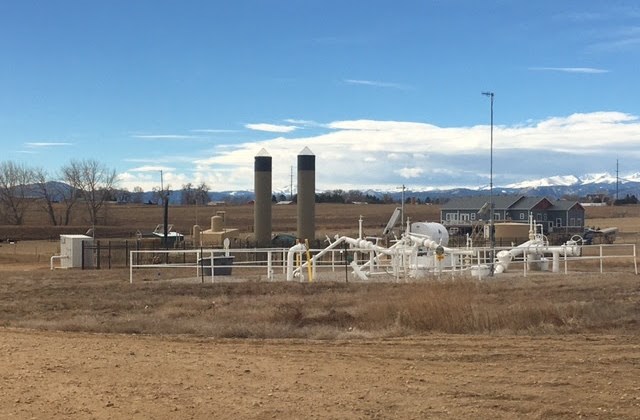Dangerous methane levels generated by oil and gas operations continue to increase faster than the global average, a Longmont air quality monitor said Thursday. Boulder and Broomfield county officials also said people living near multi-well, horizontal oil and gas operations report greater upper respiratory and acute health symptoms.
Those who monitor oil and gas production for the local governments decided to show the results of their own air quality studies to refute claims recently made to the Air Quality Control Commission that toxic methane levels were on the decline.
“Our local government studies contradict these findings,” Cindy Copeland, air and climate policy advisor to the Boulder County Commissioners, told the AQCC. Satellite trend data used to back up the lowered methane claim, for instance, estimates methane in air 10,000-feet over a large grid cell, Copeland said.
Data collected by the local governments is more frequent and from stations that are on-the-ground, Copeland said. In fact, more stations are needed to get an even more accurate assessment of toxic emissions, Jane Turner, Longmont’s oil and gas and air quality program manager.
“The more monitors you have in an area, the better the chance you will get a much clearer picture of what’s going on,” Turner said.
Mindy Olkjer, oil and gas program manager for the city and county Broomfield, outlined for Air Quality Control Commissioner the results of health data collected from 427 randomly selected Broomfield residents from October-December 2021. The study said adults living within one mile of an oil and gas site that uses hydraulic fracturing reported greater frequencies of nausea, vomiting, nosebleeds, lung irritation, shortness of breath, cough and throat irritation than those living two miles from oil and gas sites.
The study was done by Broomfield’s Department of Public and Environment along with researchers from the University of Colorado School of Public Health. During the time of the study, three oil and gas sites that use fracturing were in pre-production phases and Broomfield’s air quality monitoring network captured dozens of plumes associated with air toxic releases, Olkjer said.
She also said Broomfield’s weekly air canister sample program shows pre-production activity at unconventional oil and gas sites — those that use fracturing — are linked with excess volatile organic compounds and toxic air pollutants over baseline levels.
Known carcinogens have been observed in the Broomfield monitoring, including benzene, Olkjer said.
Longmont uses two air quality monitoring stations near Vance Brand Airport and Union Reservoir. There are no oil and gas operations in Longmont but there are working wells about one mile from Union Reservoir, Turner said.
She told the commission that the global mean amount of methane levels increased by 15 ppb, or parts per billion, in 2020, according to the National Oceanic and Atmospheric Administration.
The mean methane increase in west Longmont from the spring of 2020 to 2021 was 19 ppb, Turner said. The mean methane increase during that same period in east Longmont was 30 ppb.
The increases are very “concerning,” Turner said.
Commission members said the findings from the local governments will be considered in future decisions on oil and gas development.



